There’s a reason Ireland is on so many people’s bucket lists—it’s simply incredible. With cute villages, fascinating historic sites, and unparalleled ocean views, there is a seemingly endless list of remarkable places to visit in Ireland.
From Dublin to Galway and Belfast to Kinsale, we’ve had the opportunity to drive around the Emerald Isle three times. We have found favorite coastal routes, explored ancient ruins, listened to numerous trad sessions, and eaten more fish and chips than we can count in order to put together a helpful list of fun destinations and sites.
Here’s a look at where to go in Ireland to experience some of the best of what this exquisite place has to offer.
Slieve League

In a country filled with dramatic coastline, it doesn’t get much more spectacular than Slieve League. The sea cliffs soar 1900 feet above the Atlantic making them the second-highest cliffs in Ireland.
Amidst the breathtaking landscape of Donegal, the site is less frequented than its more famous neighbors to the south–the Cliffs of Moher–which means you can visit and practically have it to yourself. Getting to Slieve League takes some commitment, but the reward is gazing out at one of the most beautiful places to see in Ireland in an utterly unspoiled setting.
Glendalough
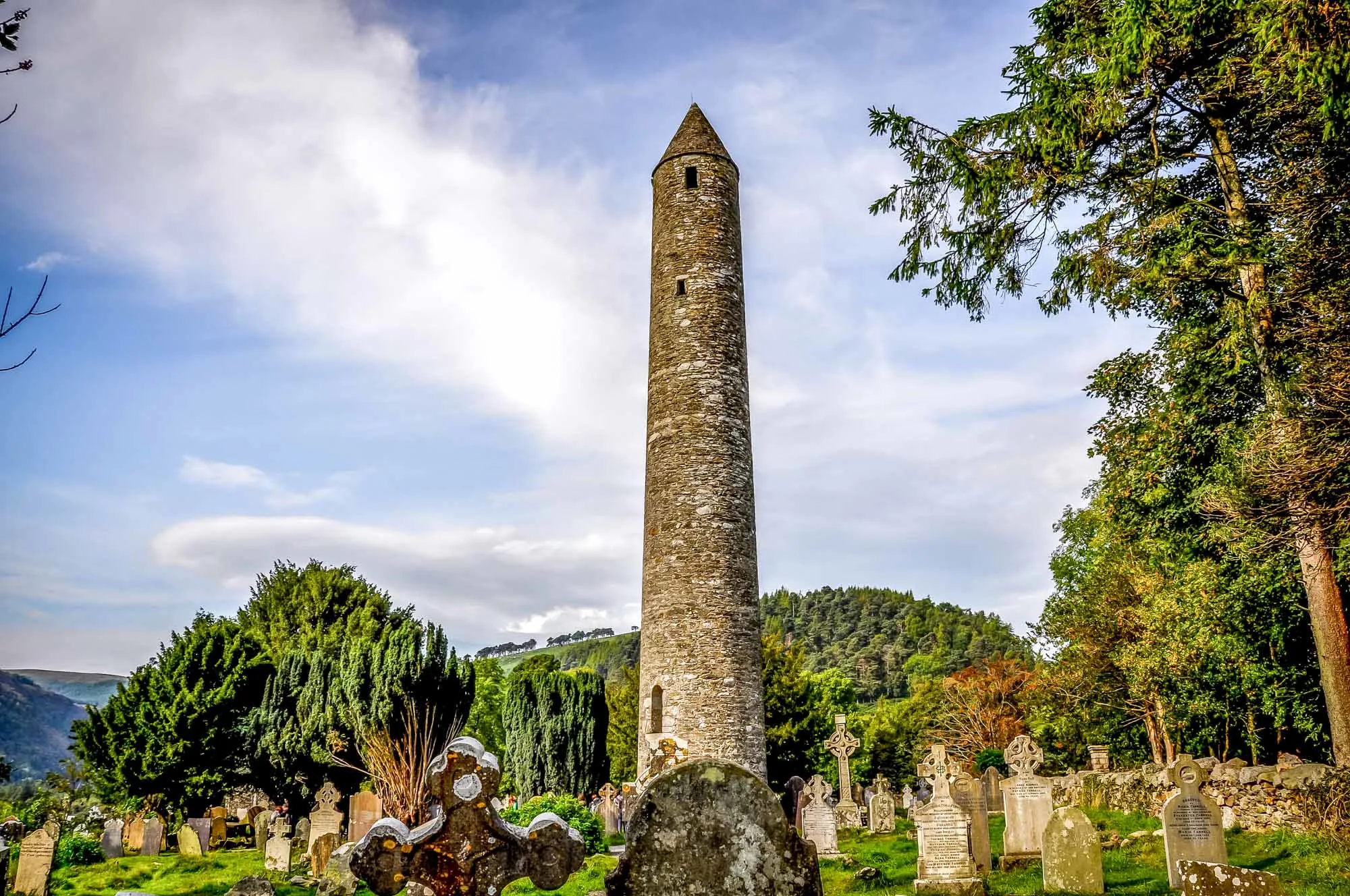
Set among the Wicklow Mountains, the monastic settlement of Glendalough is one of the most magnificent ancient sites in the country. It was founded in the 6th century by St. Kevin and became a prominent center of learning.
Glendalough is noted for its round tower that stands nearly 100 feet tall and the group of medieval buildings clustered in the valley. From a 6th-century cross to the cemetery and beyond, there are lots of details to uncover here.
On a clear day, it’s a gorgeous place to wander some of the hiking trails and see the lakes. With more overcast weather, it’s easy to imagine the monks that once walked its grounds while the fog hangs over the valley. We’ve seen it under both conditions on different visits, and it’s beautiful either way.
Doolin
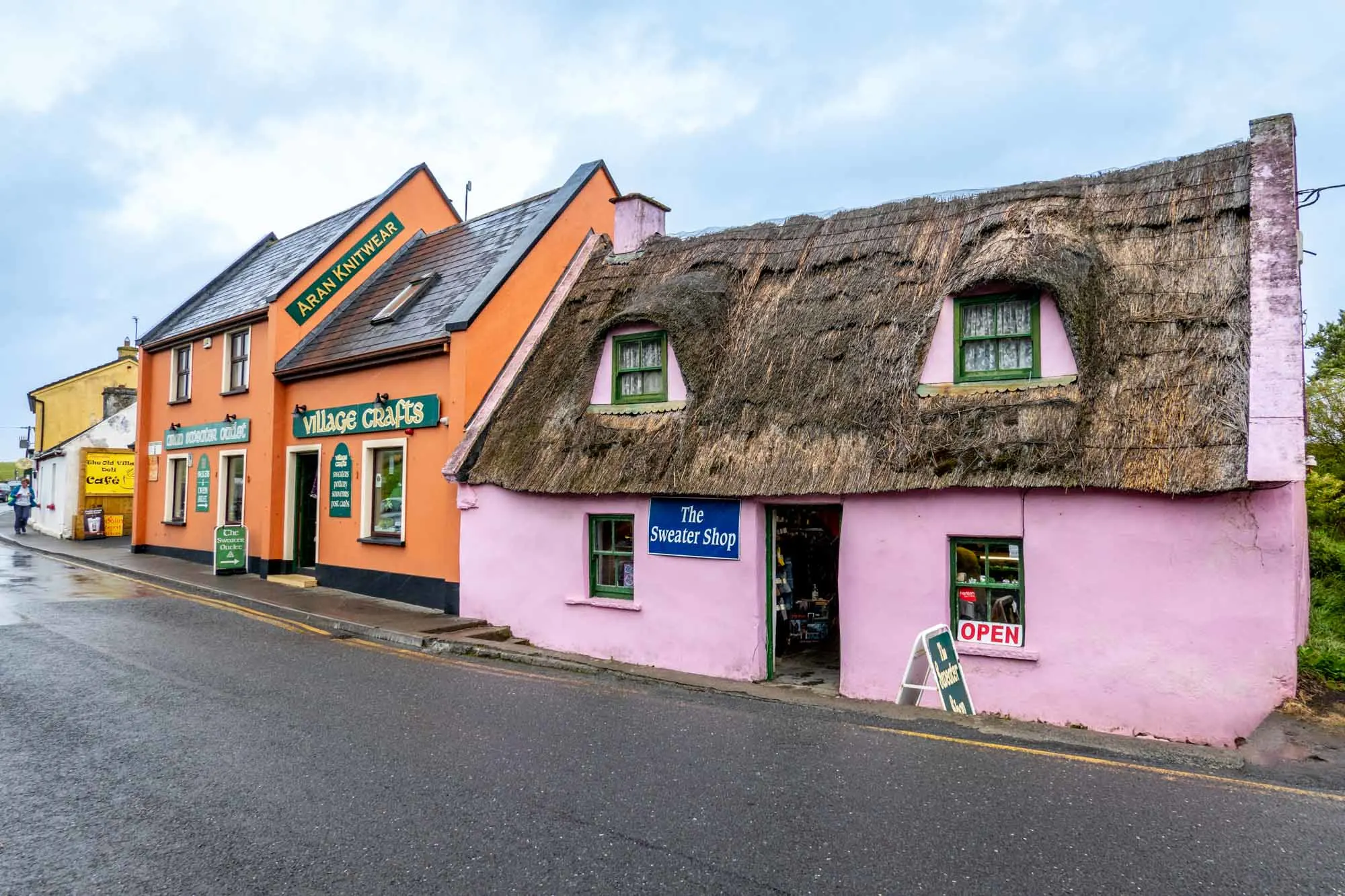
The village of Doolin in County Clare is the home of traditional Irish music. This town of just over 300 residents has five pubs and restaurants that host regular trad sessions, so you can find great music and craic nearly every night of the week. It’s one of the most charming places to visit in Ireland.
If you’re feeling ambitious, it’s easy to visit all the pubs within a 20-minute walk. Our choice was McDermott’s where the music starts nightly at 9pm, but each spot has something to set it apart.
Doolin is also a good base for visiting nearby attractions. It is the start/end of a 3-hour walking route to the Cliffs of Moher and is the point of departure for visiting the Aran Islands with daily ferry sailings from April through October.
Cliffs of Moher
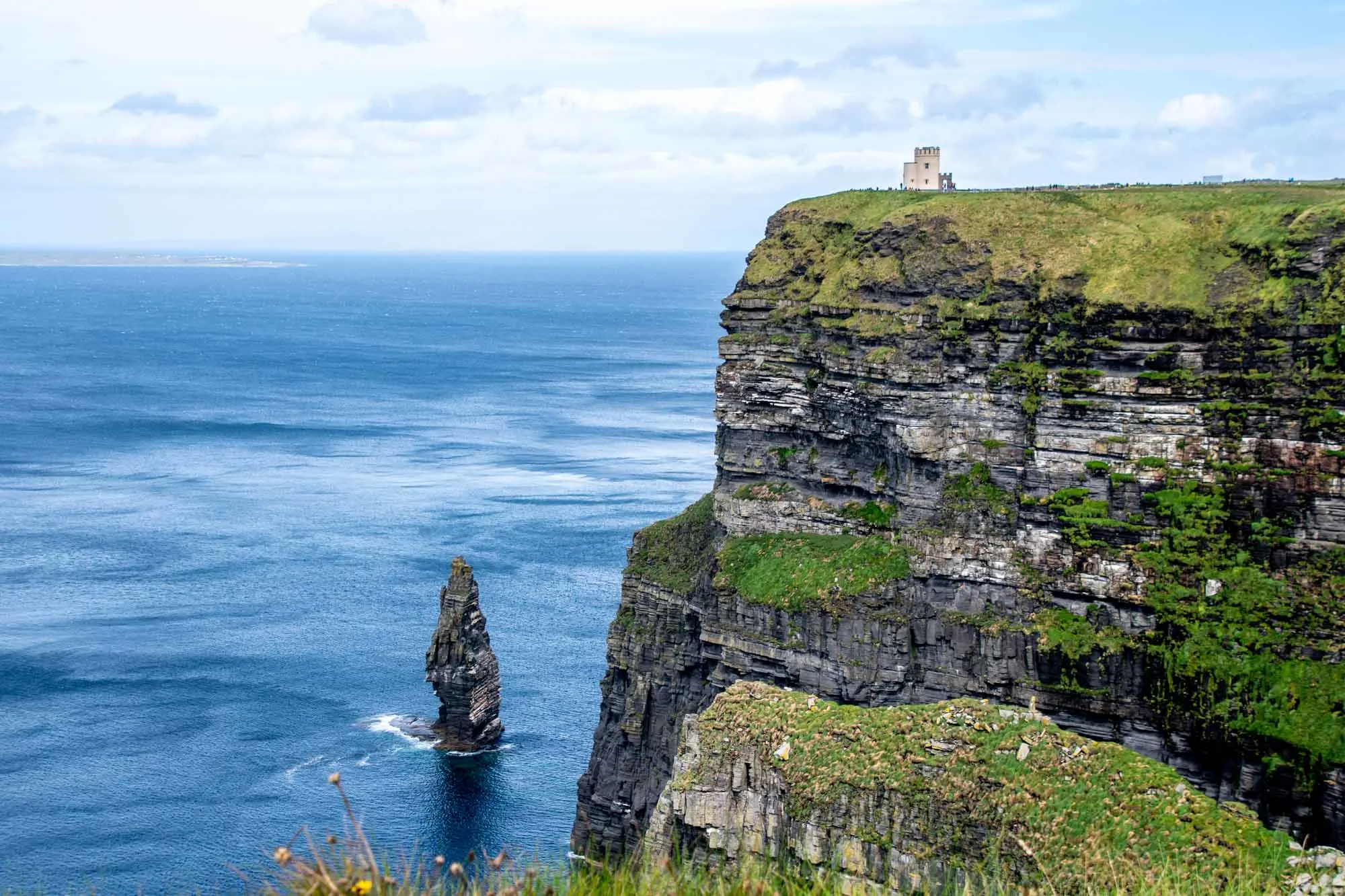
Along the west coast, the Cliffs of Moher stretch for five undulating miles. Rising up to 700 feet above the ocean, the cliffs provide what is unquestionably one of the best views in the country. They are the top natural attraction in Ireland for good reason and draw crowds year-round, welcoming around one million visitors a year.
From The Princess Bride to Harry Potter and the Half-Blood Prince, the cliffs have been the setting for numerous movies and television shows, but seeing them in person is still wildly impressive. Don’t miss the visitors center for an overview about how the cliffs formed and the numerous species of puffins and other seabirds who make their homes here.
A visit to the Cliffs of Moher can be crowded in peak season because it’s a very popular stop on coach tours. Bring your patience, but consider leaving your hat in your car—it can get incredibly windy here, and we’ve seen lots of people lose them to the ocean below.
Rock of Cashel
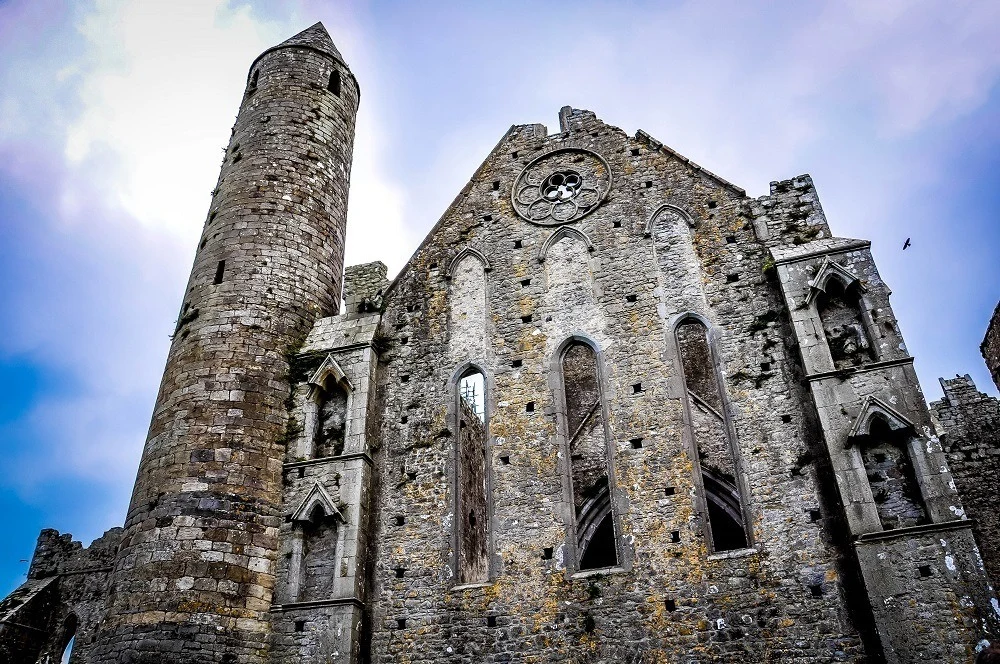
Few places in Ireland have seen as much history as the Rock of Cashel. In its 1000 years, this limestone rock above the Tipperary plain has seen Vikings, kings, battles, prayer, destruction, and restoration. Its stories and ruins draw visitors from around the world, making it Ireland’s most visited heritage site.
The Rock of Cashel is reportedly the site where St. Patrick converted and baptized King Aengus to Christianity in the 5th century. In the early 1100s, the Rock was donated to the Catholic Church, and the rest is history.
The medieval buildings that still stand here include the round tower that dates from the 1100s and Cormac’s Chapel which houses the only Romanesque frescoes that still survive in Ireland. The castle and Gothic cathedral ruins are also fascinating to visit.
Connemara
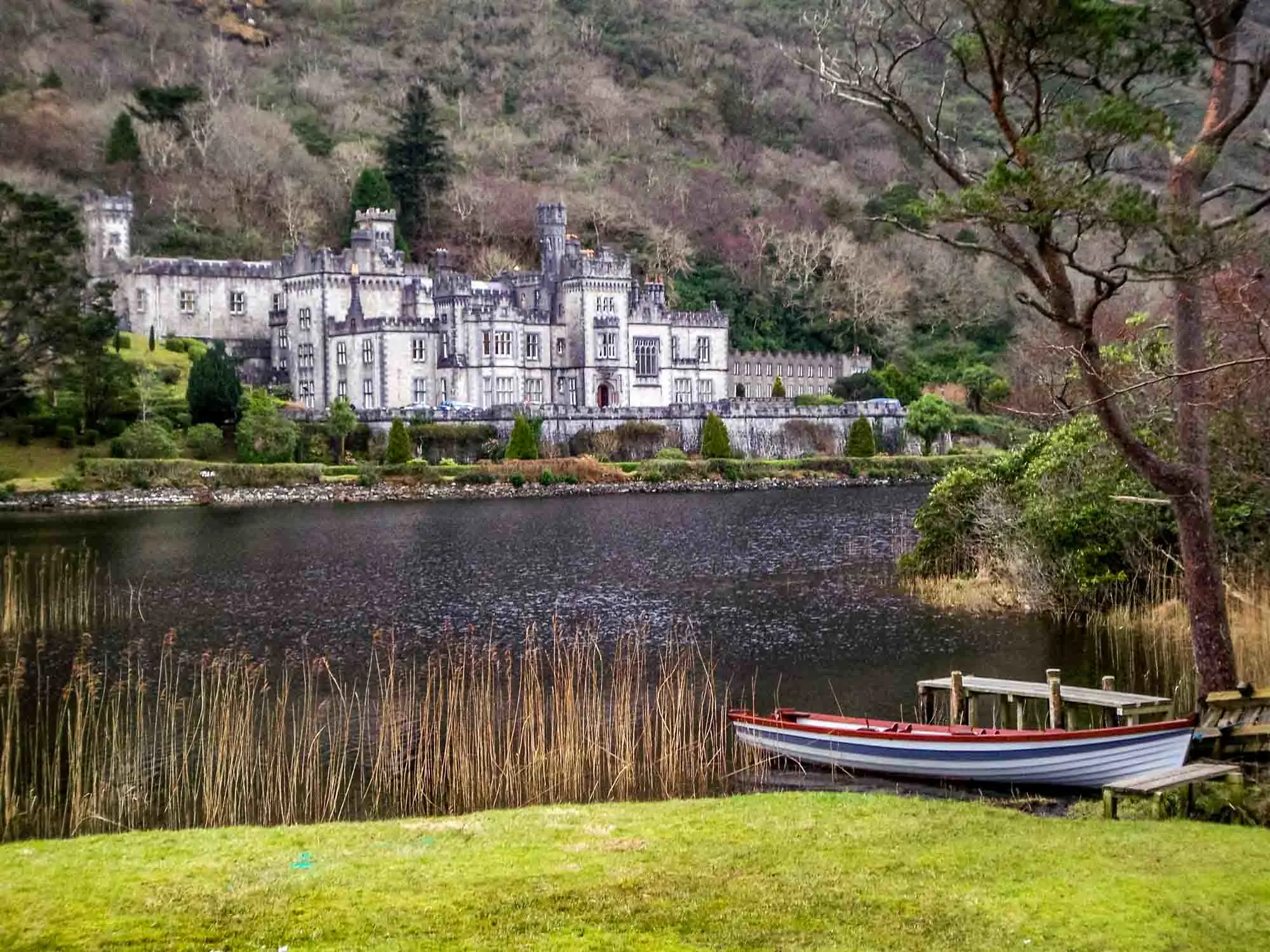
The lakes, mountains, and bogs of Connemara place it high on the list of most striking landscapes in the country. This region of County Galway is scenic and rural, offering lots of outdoor activities, including hiking, boating, fishing, and horse riding. One of its greatest gems is Connemara National Park whose 2000 hectares welcome visitors to enjoy camping and nature trails.
Connemara is a Gaeltacht, meaning that residents of its villages like Clifden and Letterfrack often use Irish as their primary language.
The area’s top attraction is Kylemore Abbey. Set against a mountain backdrop, the 19th-century building was once a private home but has functioned as a Benedictine abbey for over a century. It is open for tours and garden visits, and there are opportunities for nature walks and guided hikes across the 1000-acre estate.
Dingle Peninsula
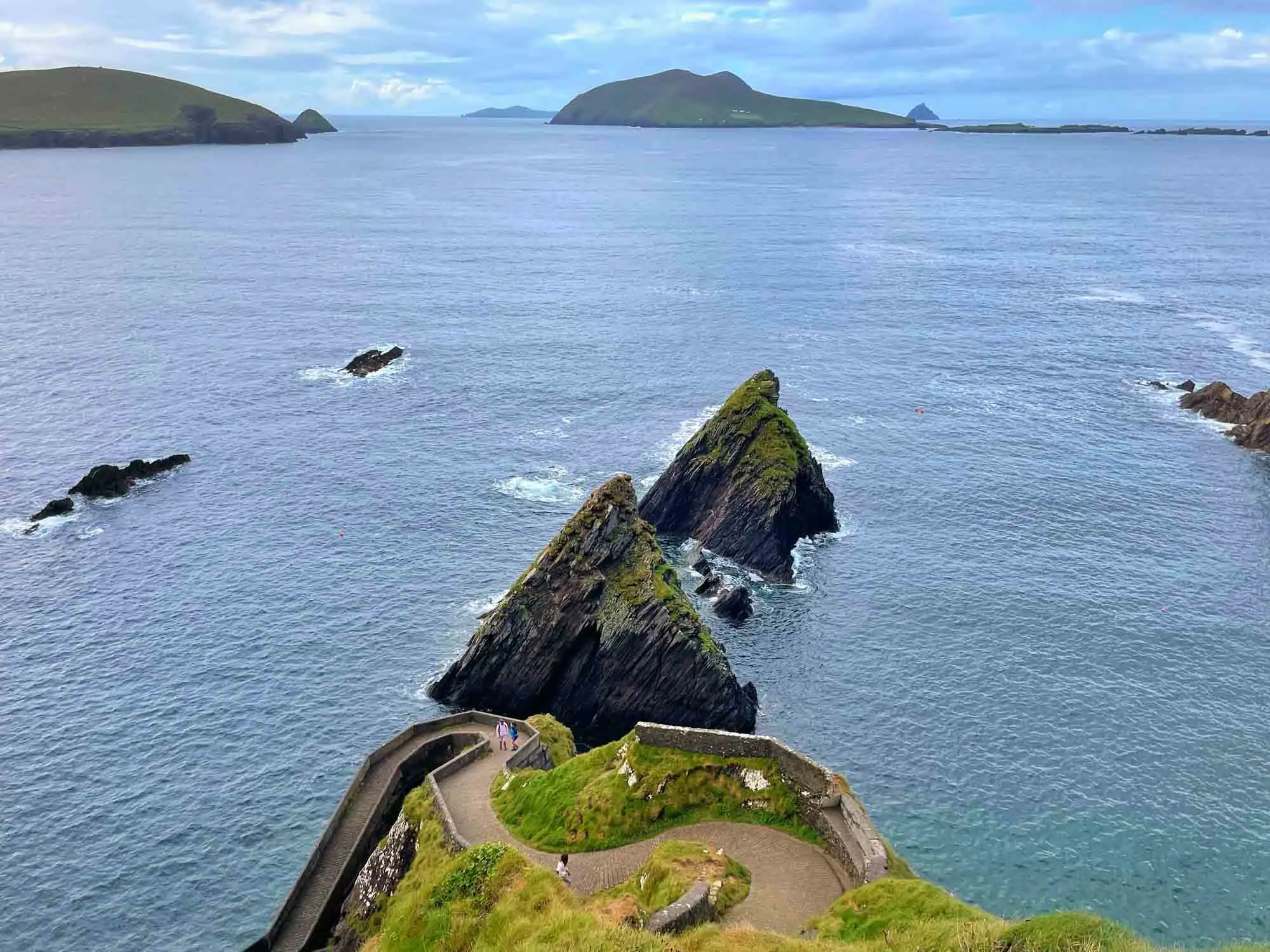
From coastal drives to ancient ruins and villages filled with friendly, Irish-speaking locals, the Dingle Peninsula is not to be missed. In the southwest of the country, this gorgeous area is part of the Wild Atlantic Way. Its stunning views and unique natural features make it one of the top Ireland destinations.
Slea Head Drive is one of our favorite places to experience the beauty of Dingle. Numerous viewpoints along the way beckon you to stop and look at the dramatic scenery. There are also beehive huts built by settlers on the peninsula centuries ago and Gallarus Oratory, an ancient church that is estimated to be about 1400 years old. From Dunquin, you can gaze out at the Blasket Islands and learn more about them at the nearby Great Blasket Centre. Wherever you stop, Slea Head Drive is exceptional.
Dingle town is also a favorite of ours that we’ve had a chance to add to our itinerary on two visits. Its brightly colored shops allow for lots of browsing opportunities, and there are many restaurants serving some of the best seafood around. If you’re craving something sweet, visit the original Murphy’s Ice Cream where you can try every one of their creative flavors. We’re partial to the chocolate whiskey.
English Market in Cork
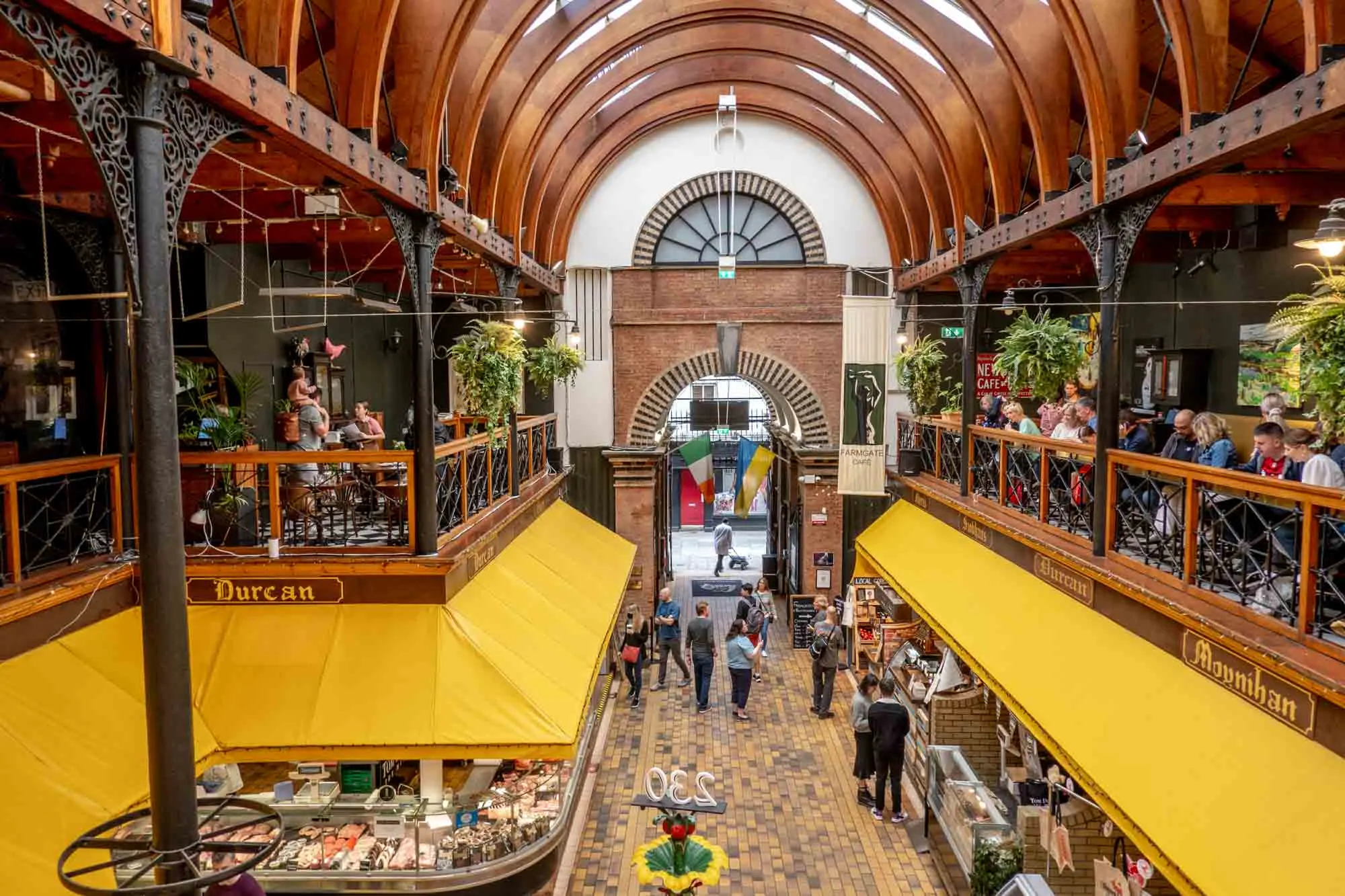
For 235 years, the English Market has been an important part of life in Cork. It is packed with products, fruits, vegetables, and meats from across Ireland and around the world. There are newer specialty businesses alongside vendors who have sold their wares here for over a century.
Stopping in to browse the market is one of the fun things to do in Cork. Check out the pastries, cheeses, spices, and wines or pull up a seat at one of the on-site restaurants and cafes. Breakfast at the Farmgate Café is always a good idea.
Cobh
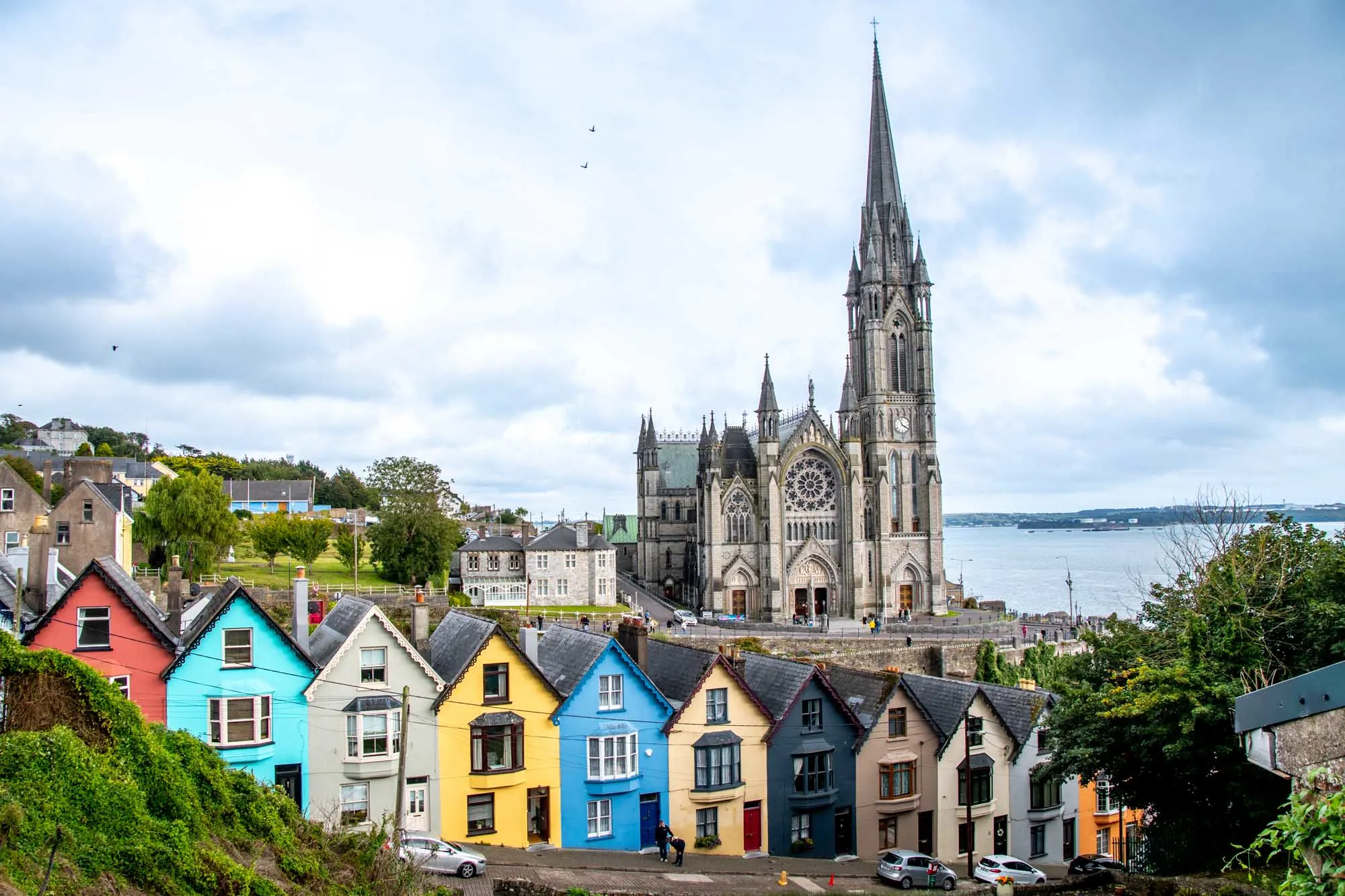
Just 25 minutes from Cork, the charming town of Cobh (pronounced “Cove”) is one of the must see places in Ireland. Spend an afternoon seeing the sites or just stroll along the waterfront to enjoy the shops, cafes, and park.
Cobh, which sits on an island in Cork harbor, is best known for its history as both a port of departure for Irish citizens emigrating to other countries and as the last stop the Titanic made before its disastrous sinking. There are museums dedicated to both topics. The Cobh Heritage Centre tells the story of Irish emigration and the town’s maritime history. The Titanic Experience, which is in the original White Star Line ticket office, follows the journey of the ill-fated ship and the stories of the 123 passengers who boarded in Cobh.
The cathedral that dominates the town’s landscape is worth a stop. Built beginning in 1868, St. Colman’s Cathedral has a massive belltower with the country’s only carillon, and the interior is decorated with carved arches and ornate stained glass. Head over to West View Park to see the view of the cathedral towering over the colorful homes known at the Deck of Cards houses.
Galway
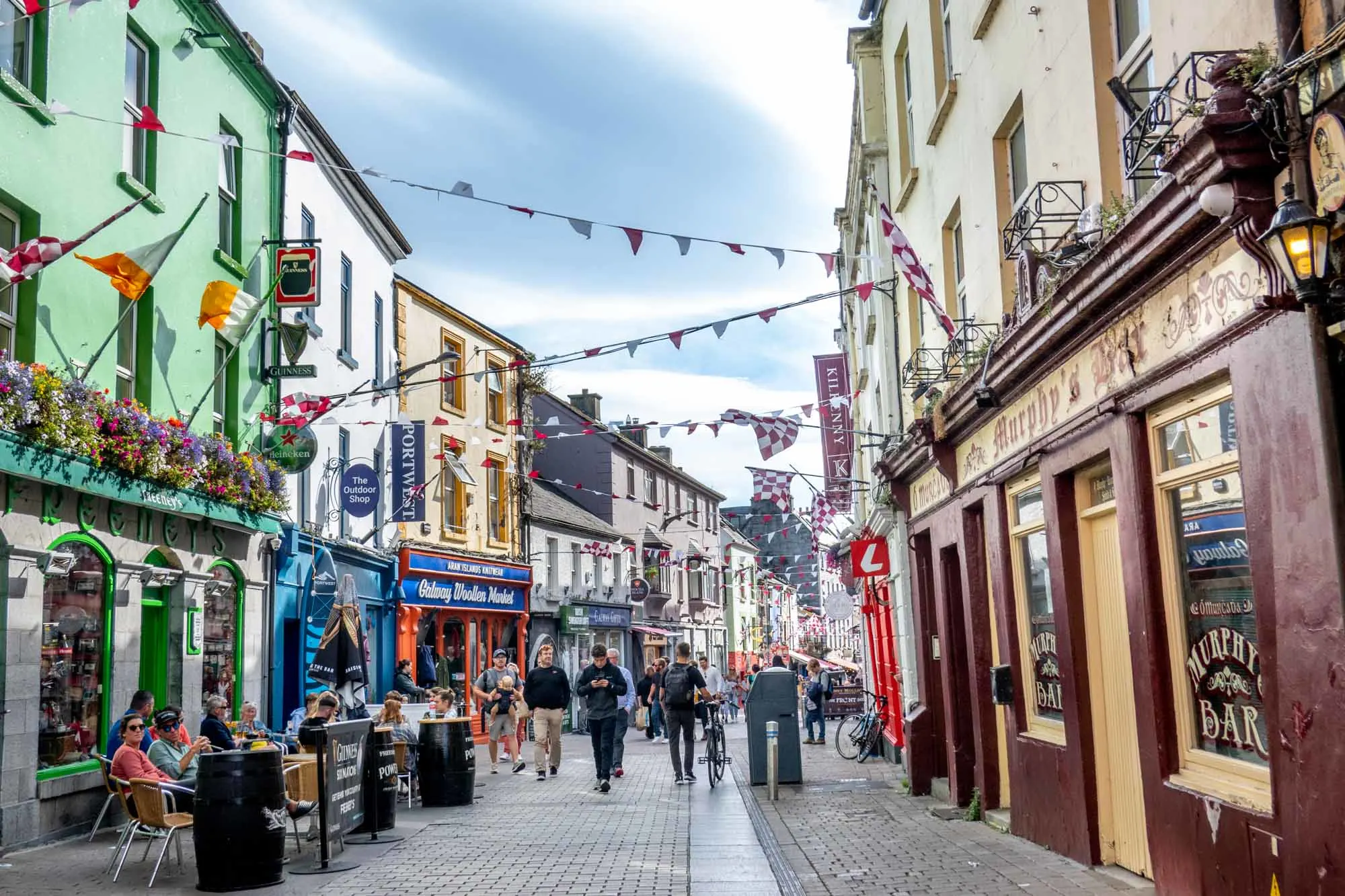
Galway buzzes with an infectious energy that guarantees visitors a great time. A university town, Galway is packed with restaurants and lots of pubs offering daily traditional Irish music and performances from bands of all genres.
On the west coast, Galway is known for its winding medieval lanes filled with art galleries and shops. There’s also lots of history here which is evident from the moment you view the Spanish Arch, which dates from 1584.
Walk around town to see the street art, pick up some snacks at Sheridan’s Cheesemongers, and enjoy the weekend farmer’s market. To explore a little further, head out to the Salthill Promenade for an ocean front stroll, beaches, and carnival rides.
Derry
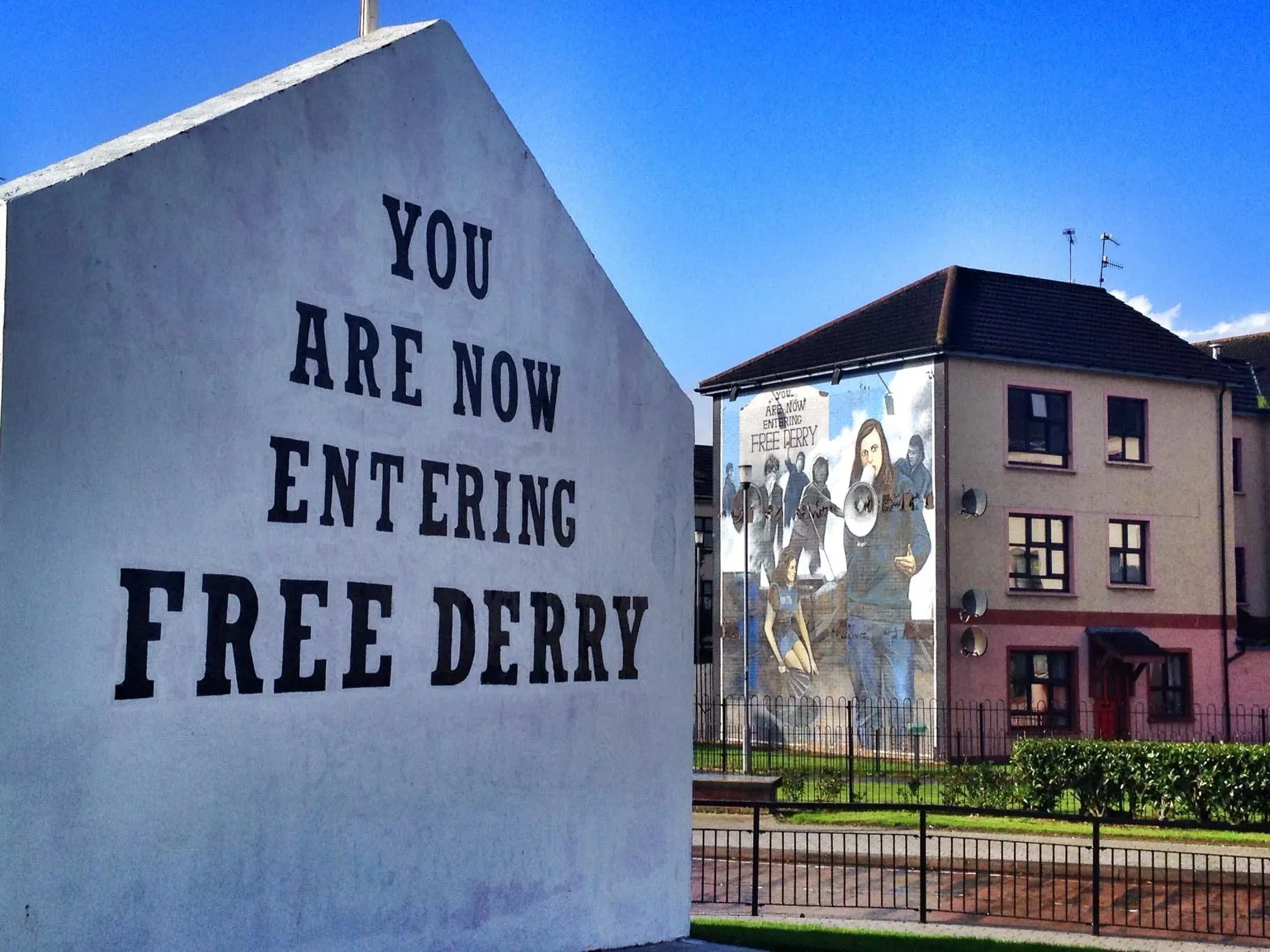
Remarkable Derry is the second largest city in Northern Ireland and the point where the Wild Atlantic Way meets the Causeway Coastal Route.
For many years, Derry experienced some of the worst of The Troubles—the fight over whether Northern Ireland should remain part of the UK or join the Republic of Ireland—and became a highly militarized city due to the fighting. Learning about the conflict is an important part of visiting Derry, and one of the best places to do that is in the Bogside neighborhood, which is full of murals depicting events and memorializing those who died.
These days, the city along the River Foyle is known for the Peace Bridge that spans the river as a symbol of its bright future. Take a walk here, wander the 17th-century city walls, and see inside St. Columb’s Cathedral that dates from 1633. For something more modern, take a tour the Derry Girls sites from the popular TV show.
Belfast
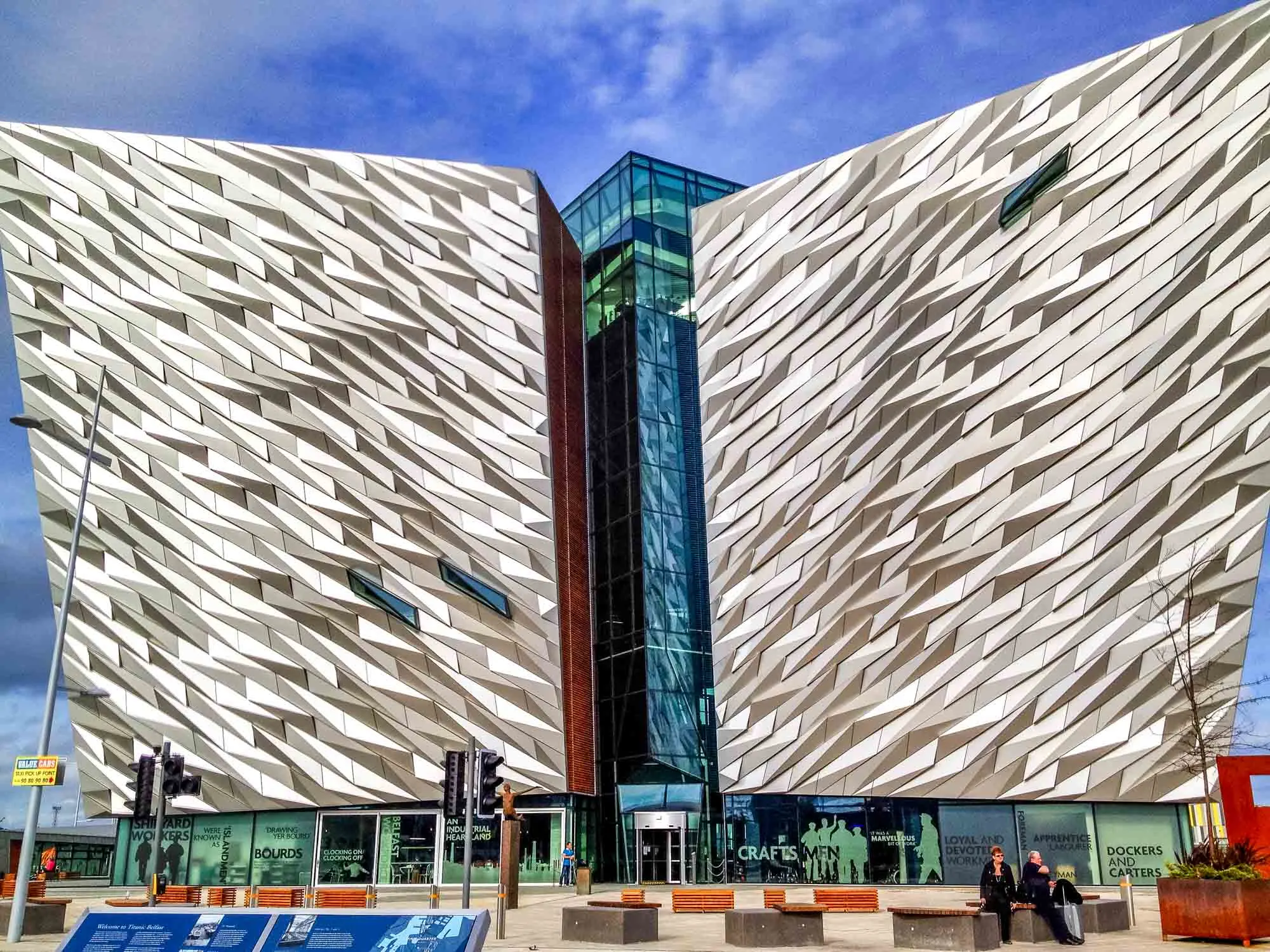
The largest city in Northern Ireland, Belfast is packed with things to do and see.
St. George’s Market has operated at the same site for an incredible 400 years. From food stands to fresh produce, the market has a little bit of everything delicious with a focus on Northern Irish products. If a pub is more your speed, check out the memorabilia-filled Duke of York or the historic Crown Liquor Saloon that has stained glass windows and an iconic red granite bar.
Architecture lovers should visit City Hall for a peek at the stunning interior and art collection in the century-old building. Crumlin Road Gaol is another of the city’s interesting spots having held notable prisoners including activists like Bobby Sands and Éamon de Valera in its 150-year history. There are guided and self-guided experiences highlighting different aspects of the prison’s past.
As in Derry, murals dedicated to The Troubles are prominent in Belfast. A Black Cab tour will take you to the notorious Shankill Road and other areas to see the artworks commemorating historical figures and participants in the decades of conflict that ripped apart communities. Our tour was one of the most eye-opening experiences we had.
Also not to be missed is the city’s top attraction, Titanic Belfast. The museum is located in the spot where the famous ship was built and launched, and it traces the story of its concept, construction, and sinking as well as the stories of its passengers. The nine galleries have interactive components and feature lots of ship-related memorabilia.
Powerscourt
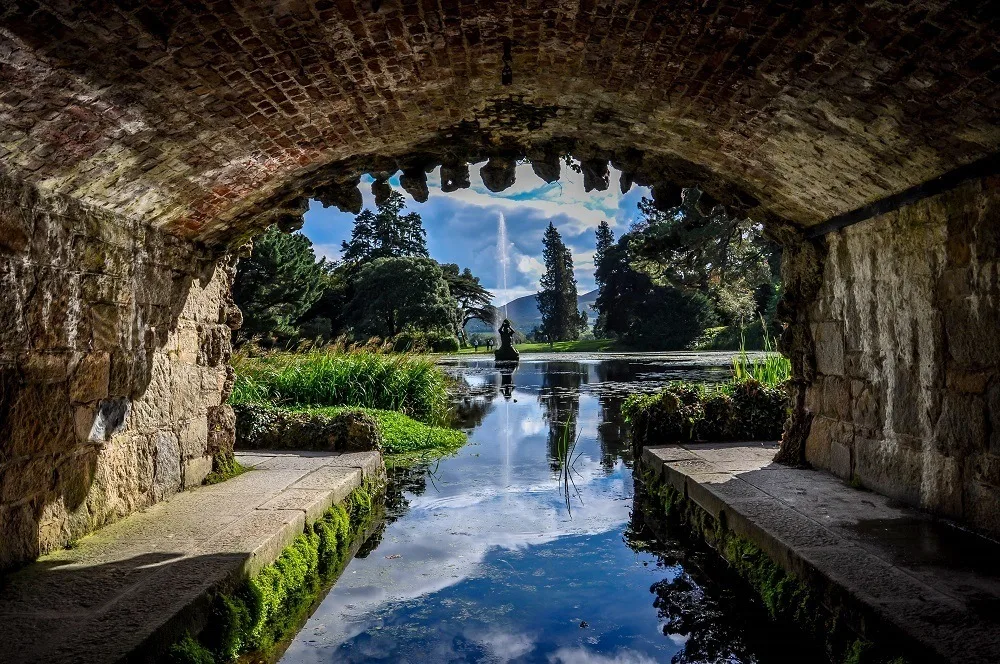
In the lush foothills of the Wicklow Mountains, the Powerscourt Estate is full of history and beauty. A mile-long avenue of beech trees leads you directly to the front door of the magnificent 18th-century manor house, which was previously the site of a castle built in the 1200s. Not far beyond is some of the best gardens in the world.
The Powerscourt Gardens are laid out on a one-hour walking tour taking in the best of the estate. It’s impossible to say which area of the gardens is the prettiest, but the pet cemetery is certainly the most unique. While some of the graves commemorate beloved family pets such as hunting dogs and the children’s cherished ponies, some have a tongue-in-cheek humor that only the Irish can pull off (the milk cow who produced over 100,000 gallons of milk).
A visit here is an easy day trip from Dublin. Don’t skip on visiting the on-site distillery when you go.
Bru na Boinne
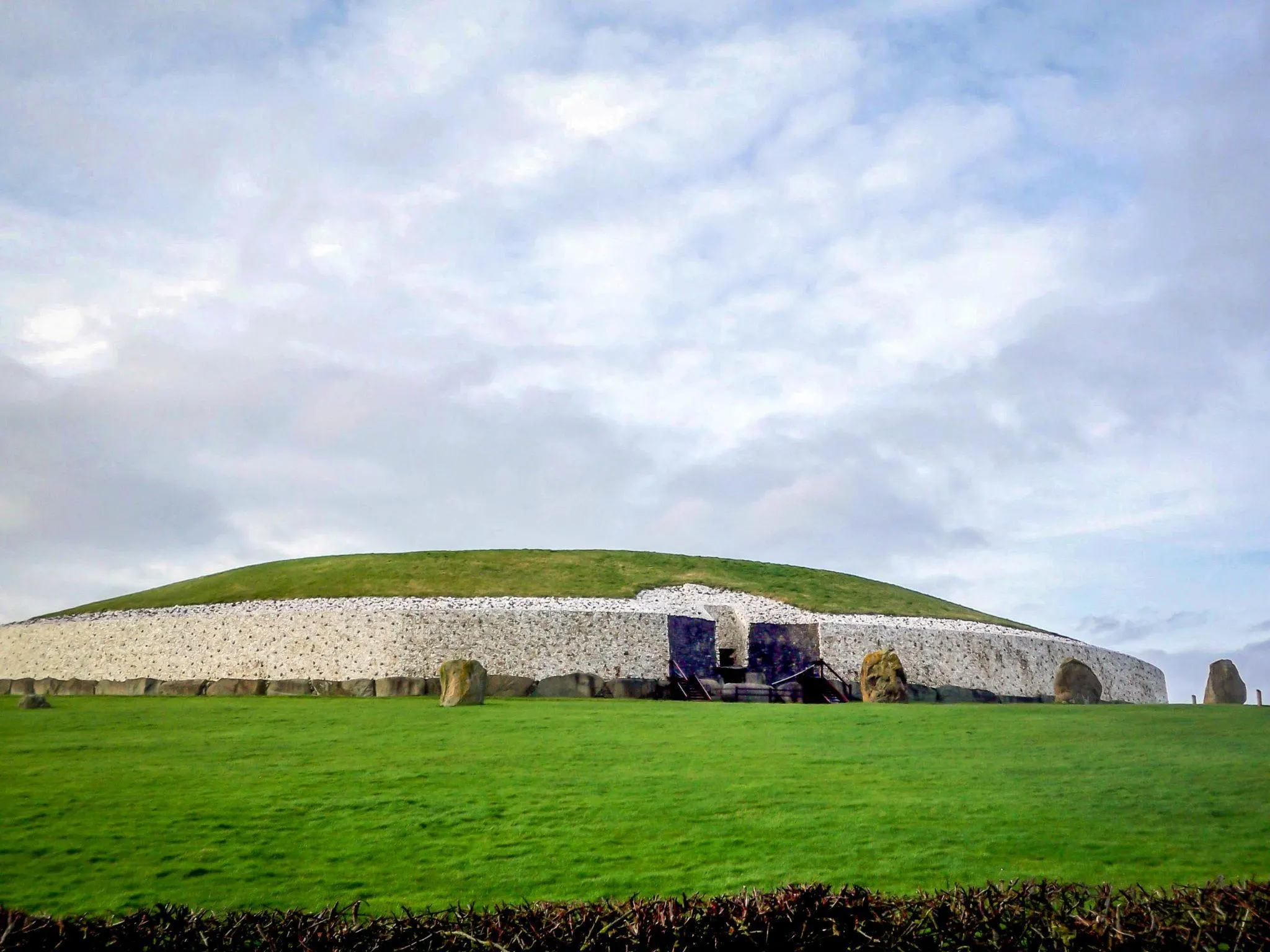
The incredible sites at Bru na Boinne are some of the oldest things to see on Earth. The burial mounds of Knowth, Newgrange, and Dowth are all around 5000 years old, predating the pyramids of Egypt by 500 years and Stonehenge by 1000 years.
Though a lot remains a mystery about these Neolithic passage tombs, archaeologists do know that they had religious, astrological, and ceremonial importance. We had the chance to visit Newgrange, the chamber that is famous for being illuminated by the sun each winter solstice. Experiencing the eerie majesty of the ancient, intricately constructed site is fascinating.
Trinity College library

Gazing at the rows in Trinity’s College’s Long Room—a massive library with books stretching to the ceiling—is one of the must dos in Dublin. The incredible space holds 250,000 of the college’s most ancient books, which is even more remarkable when you consider that Trinity itself is over 425 years old.
Just downstairs is the artifact that Trinity College is most known for: The Book of Kells. An illuminated manuscript that dates from 800 AD, the book features ornate Latin script and detailed drawings. Typically, two pages of the ancient work are displayed alongside an extensive exhibit about the book’s creation.
If the library is on your Ireland itinerary, book tickets well ahead of your visit, especially if you’re visiting in peak season.
Kilmainham Gaol
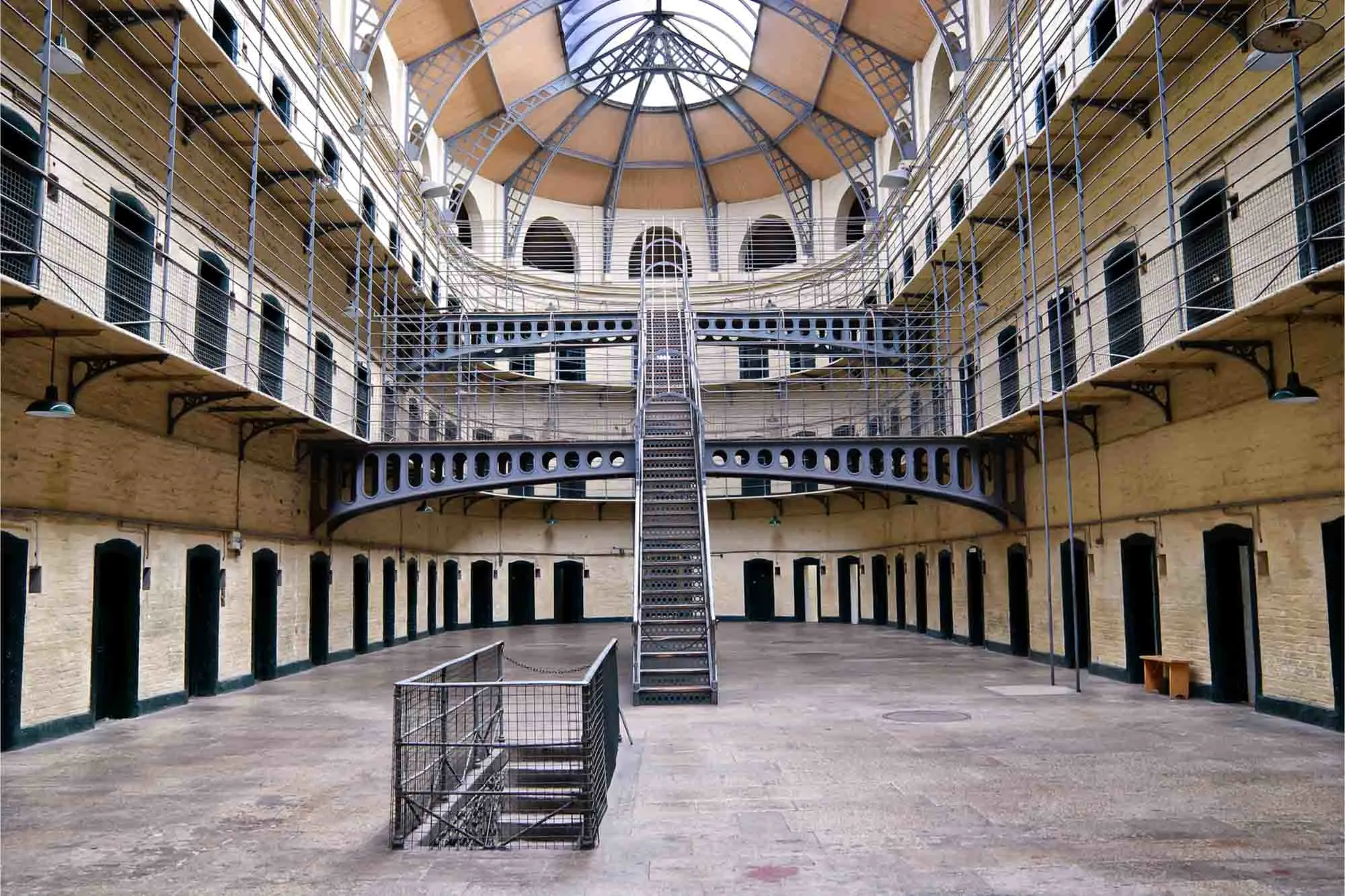
The solemn nature of a tour of Kilmainham Gaol can’t help but make an impression on most visitors. At over 225 years old, the building was once a infamous prison housing men, women, and even children in deplorable conditions, often for crimes as minor as stealing food.
The prison’s most preeminent residents were the leaders of the Easter Rising in 1916. They were incarcerated in Kilmainham after being convicted of treason, and most were executed in the courtyard. A cross and the flag of Ireland are the only items there now. Only Eamon De Valera—who later became the president of Ireland—avoided execution.
A tour here offers a look at the conditions in which prisoners lived and a discussion of modern Irish political history. You’ll learn about its most well-known prisoners as well as the thousands jailed for petty crime and those who were ultimately shipped off to Australia. It’s one of the most thought-provoking experiences we’ve had in Ireland.
The Burren
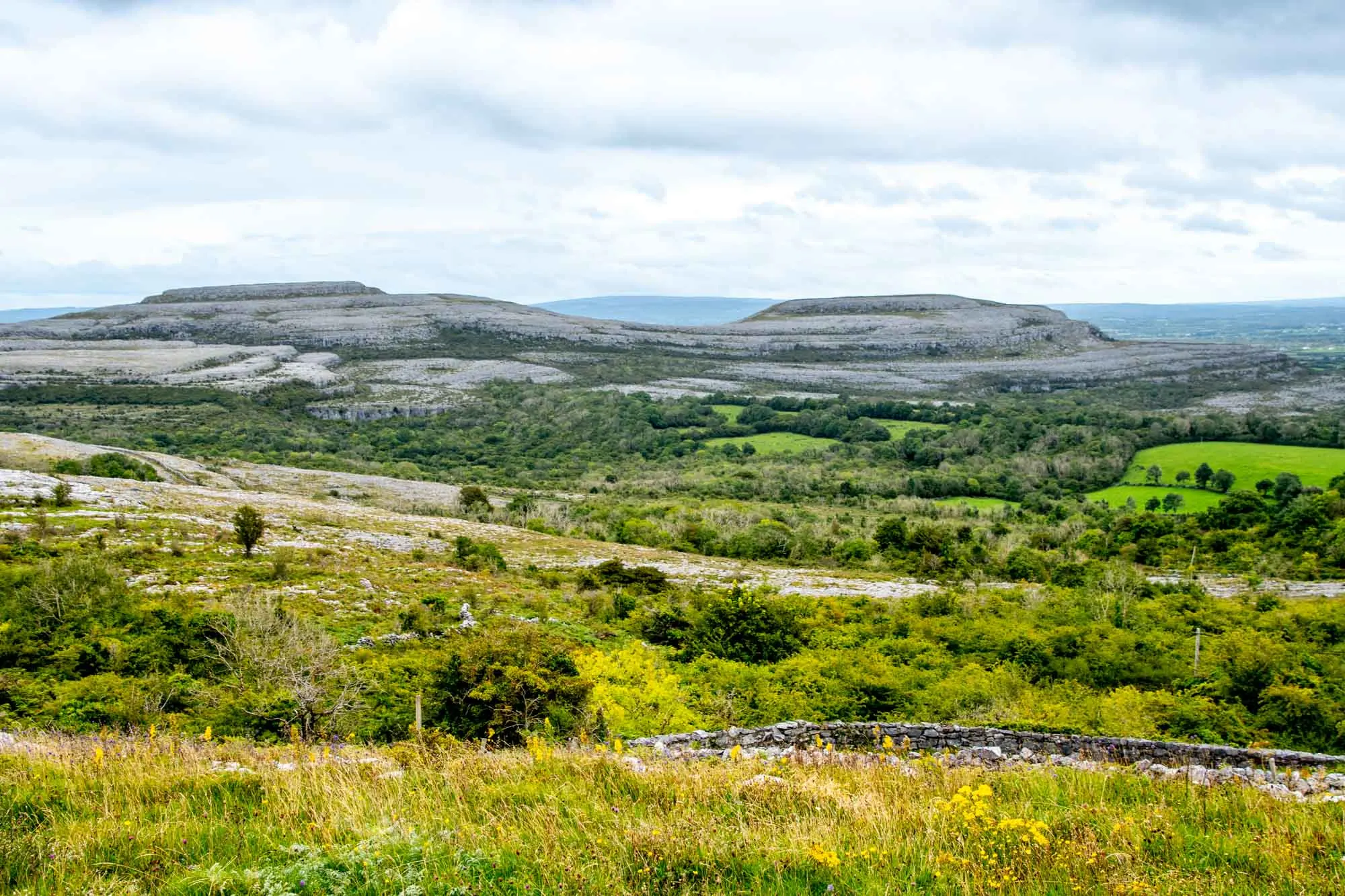
The limestone landscape of the Burren in County Clare spans 200 square miles. Among the fertile rocks are acid- and lime-loving plants that thrive despite the unusual conditions. To protect the distinct flora, 1800 hectares are designated as The Burren National Park, drawing visitors eager to learn about the geology and plants.
The dramatic scenery continues underground with sites like Aillwee Cave. The cave, which is nearly 300 feet underground at its deepest point, includes stalactites and stalagmites, bridged chasms, and even an underground waterfall.
The history of the Burren is long, which is evident in the historic sites in the area. Caherconnell Stone Fort dates back to the 900s and was likely inhabited for 600 years. Visitors can still see its remains and learn about medieval life. Poulnabrone dolmen is much older—likely constructed between 4200 BC and 2900 BC. This Neolithic portal tomb is one of the area’s most unique things to see in Ireland.
Kinsale
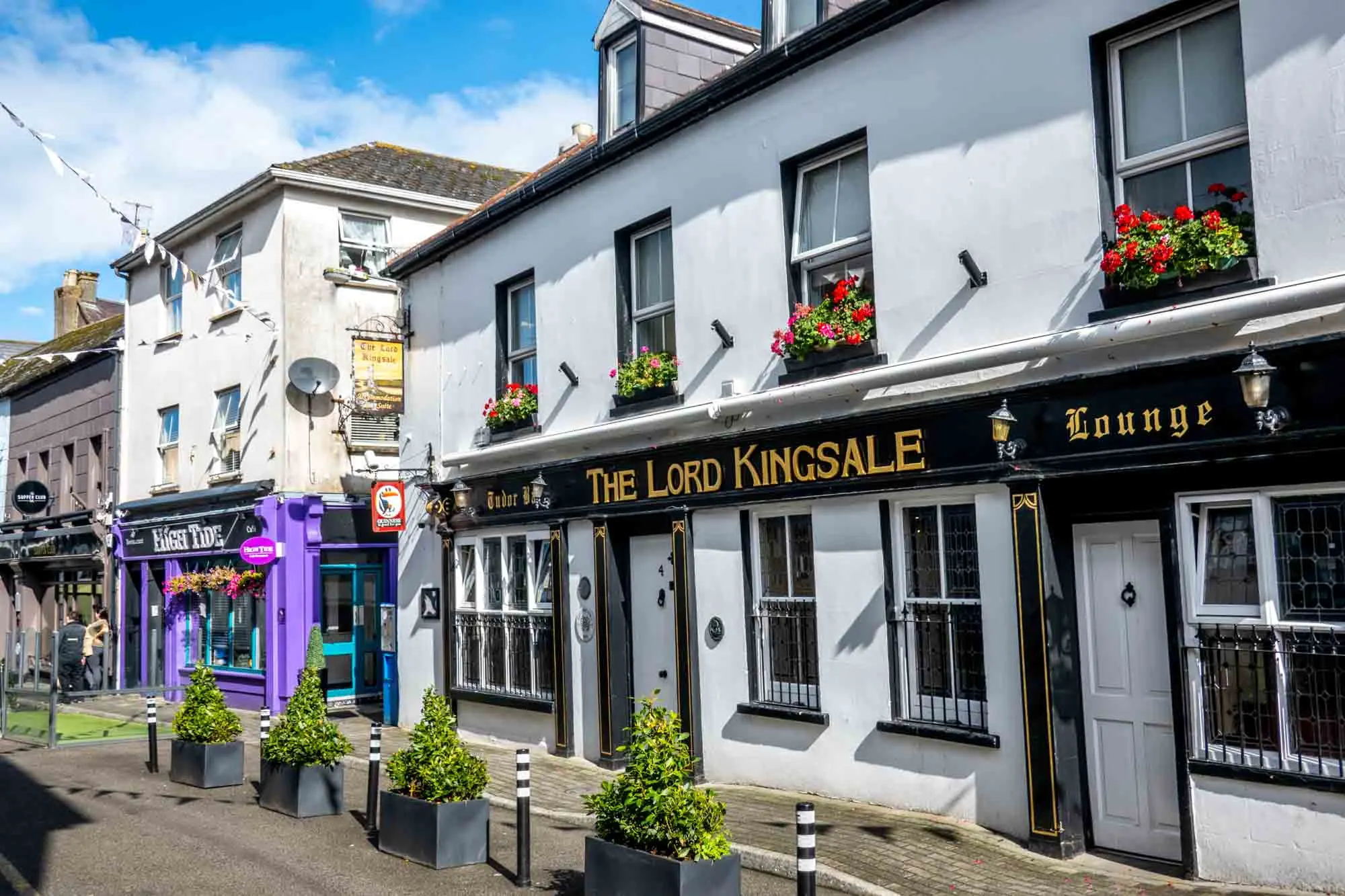
The historic port village of Kinsale greets visitors looking for activities on the water, great food, and lots of Irish hospitality. Its natural harbor brings lots of boats offering deep sea fishing, SCUBA diving, and harbor cruises, and its broad sand beach means you can swim, kayak, and paddleboard.
Kinsale is known for its food. There are restaurants of all kinds, but seafood is a particularly good bet here. April brings a fun street food festival, and the Kinsale Gourmet Food Festival in October draws thousands of attendees.
Take time to browse the brightly colored shops and make a stop at Kinsale Mead Co., a family-run business with tastings and a tour. For a look at the history of the area, head to James Fort or Charles Fort, two 17th-century forts that protected the harbor for centuries.
Blarney Castle
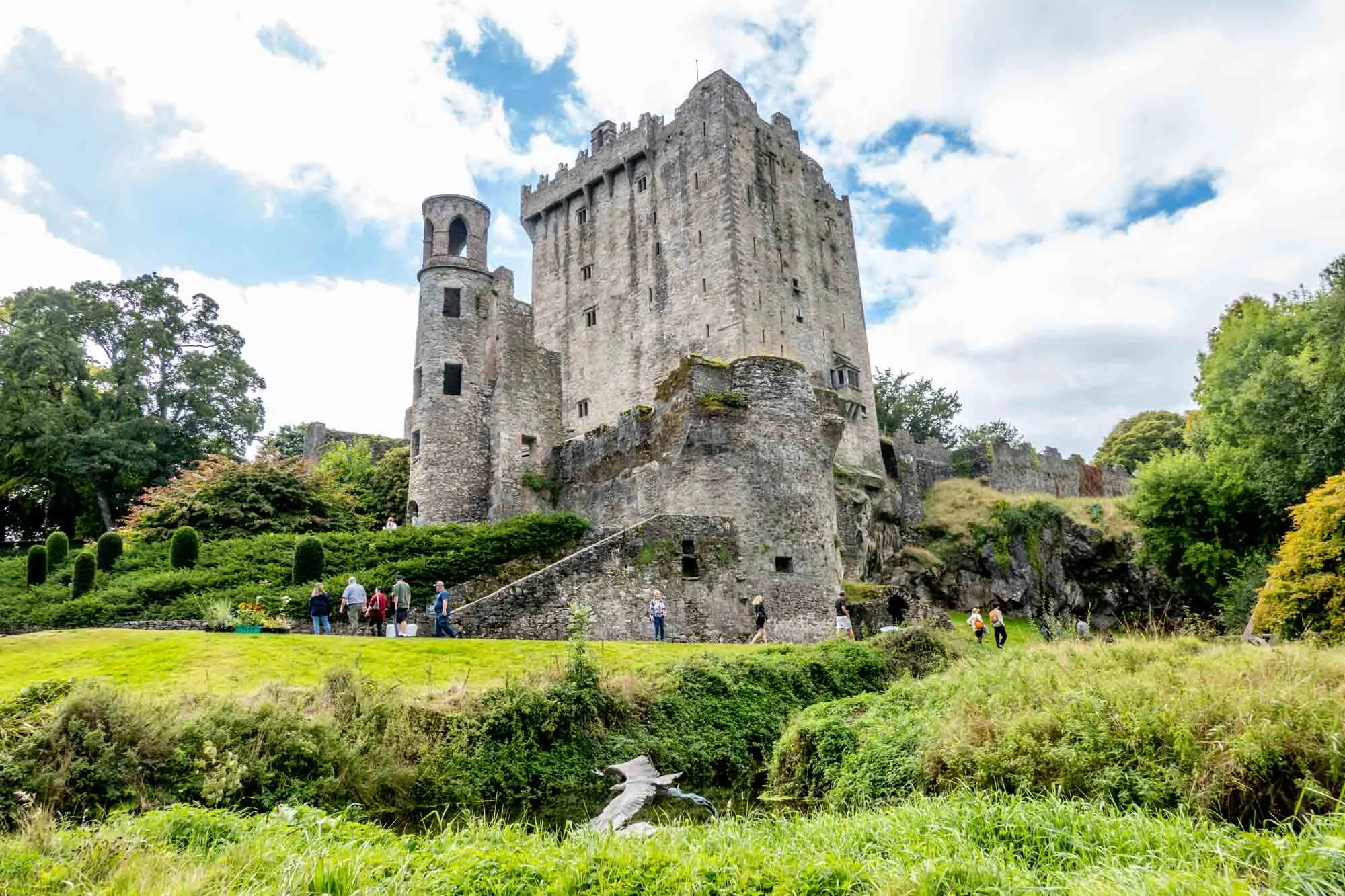
Of Ireland’s many outstanding castles, Blarney Castle is probably the best known because of its stone.
According to legend, those daring enough the kiss the Blarney Stone become eloquent and get the Irish “gift of the gab.” Kissing the stone requires lying down and bending backwards over the castle wall, so it’s not for everyone.
Even if you’re not interested in lining up to kiss the stone, there is lots to see on the grounds of the 600-year-old castle. You can see the dungeons and interior of the castle as well as the exhibition rooms and Blarney House. Our favorite part was wandering some of the garden trails to see the landscaped and more natural areas of the estate and the sculptures scattered throughout.
Causeway Coast
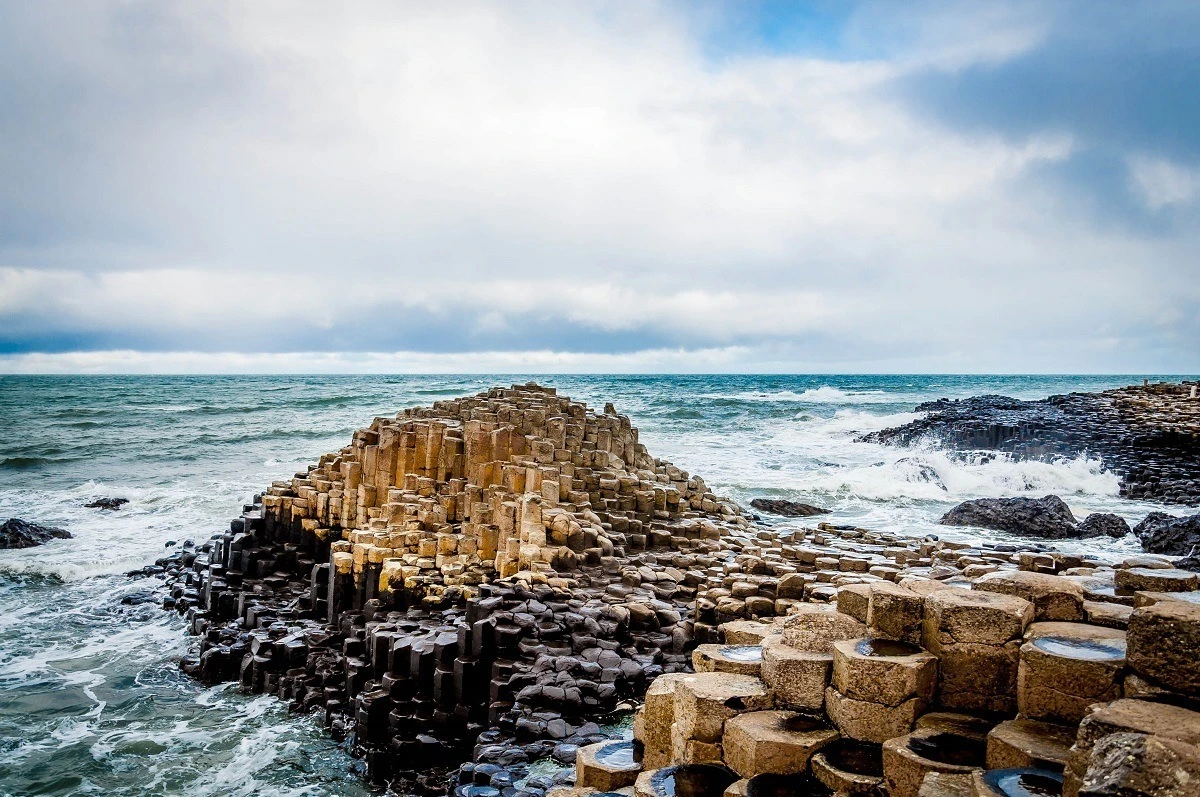
The Causeway Coast, which stretches from Belfast to Derry, has a wealth of sites worth visiting. Carved into the cliffs and perched on the hills, the road links castles, caves, sandy beaches, small towns, and amazing geological formations.
You can stroll the walled garden of 17th-century Glenarm Castle and settle in for afternoon tea or gaze out at the ruins of Dunluce Castle on its cliffside spot above the ocean. If you’re up for an adventure, step out on the Carrick-a-Rede rope bridge that hangs between two rocky outcroppings in the north Atlantic. For something a little calmer, visit The Old Bushmills distillery to sample some Irish whiskey.
The main site on the Causeway Coast is the epic Giant’s Causeway. With over 40,000 basalt columns and beautiful ocean views, it’s a unique place to spend some time climbing around on the stones.
Laura Longwell is an award-winning travel blogger and photographer. Since founding Travel Addicts in 2008, she has written hundreds of articles that help over 3 million people a year get the most out of their travel. In that time, she has visited nearly 60 countries on 5 continents, often returning to favorite destinations over and over again. She has a deep love of history, uncovering unexpected attractions, and trying all the good food a place has to offer.
In addition to Travel Addicts, Laura runs a site about her hometown of Philadelphia—Guide to Philly—which chronicles unique things to do and places to see around southeastern Pennsylvania. Her travel tips and advice appear across the web.
